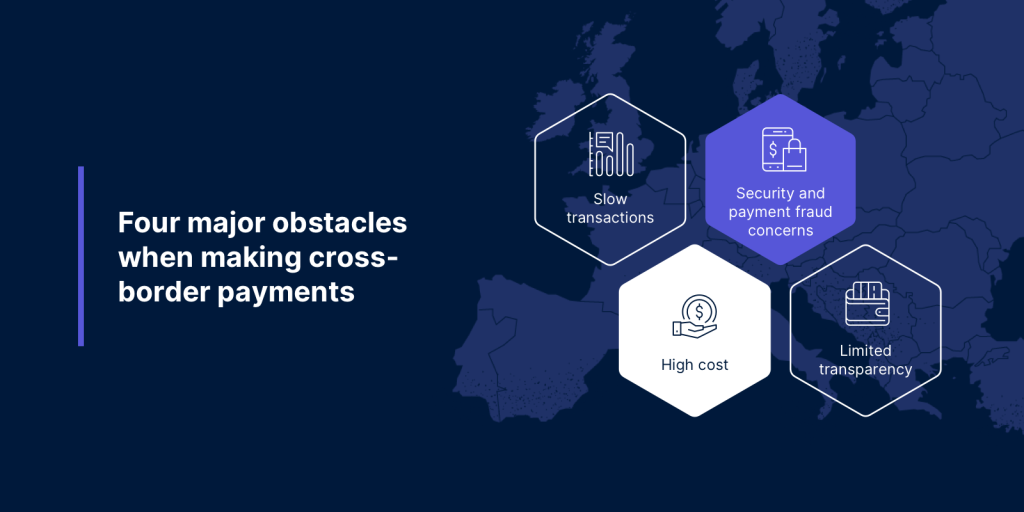Today, we live in a world where it is crucial for businesses, customers and financial institutions alike to make frictionless international transactions. However, significant challenges persist in the cross-border payments ecosystem, despite their importance in driving financial inclusion and business expansion.
In the past, companies and consumers would execute cross-border transactions in one of three ways: by relying on couriers to move the money on their behalf, carrying physical cash across borders themselves, or by using an informal broker network that transported funds without physical money movement, based on trust alone.
These methods were inefficient, unreliable, risky, and often came at a high cost with the cross-border payments market expanding. Thankfully, over the last 40 years, the SWIFT communication network and correspondent banking relationships have been the go-to method for moving money across borders. However, even newer methods are not without limitations.
Costly, complex and security concerns
Although many banks and financial institutions have taken steps to remedy these problems, unfortunately, cross-border payment systems still suffer from many of the same complaints.
Back in 2018, the Committee on Payments and Market Infrastructures (CPMI) went on record discussing the problems at stake – ‘cross-border payment services do involve more risks, complexities and rules than domestic payments.
Clearly, the banking industry and fintechs must envision a future with enhanced solutions that enable lower value transactions, with more speed and added security.

Four major obstacles that businesses and consumers face when making cross-border payments:
- High cost
SWIFT messaging fees, regulatory costs, spread on foreign exchange (FX) and transaction fees can quickly add up. Likewise, the number of intermediaries involved in carrying out the transaction can compound costs, as each correspondent bank will need to be reimbursed for their service.
- Slow transactions
Generally speaking, these payments can take between two and five business days to process, and sometimes longer if there are a number of intermediaries involved. This might not seem too long, but it is a markedly slower turnaround than domestic payments, which are virtually instant. The result of this is that organisations may experience significant cash flow burdens, which for some, could threaten the survival of their business.
- Security and payment fraud concerns
It goes without saying that all businesses, consumers and financial institutions demand certainty over the safety of their funds when making international payments and transactions. However, as things currently stand, 56% of businesses are concerned about payment fraud in cross-border transactions, with a similar number (52%) also worried about the theft of payment data.
Unfortunately, these fears are founded on the basis that cross-border payment systems frequently suffer from high-level security breaches. Typically, this happens when funds enter a country that has weaker security procedures in place, and can happen as a result of fraudulent cheques, wire transfers and Business Email Compromise (BEC).
Weak spots can also appear as organisations scale and begin to increase their international payments – this often results in an increased number of payment paths, and it can be difficult to retain the same level of control with each transaction.
- Limited transparency
Finally, businesses may struggle with the lack of transparency over the cost, speed and arrival confirmations of cross-border payments, particularly when doing business with a number of different intermediaries.
Each intermediary is likely to do things differently, which can make it difficult for firms to track payments and gain a clear picture of the costs and deductions involved, often leading to hidden costs. It is important that we aim to continuously enhance cross-border payments.
Read more on understanding the payments landscape: our latest research.
Overcoming obstacles
When it comes down to it, businesses, banks, and consumers deserve a seamless cross-border payment experience, free from concern, this is why we strive to continuously improve cross-border payments as payment providers.
While delays, compromised security and limited transparency may plague the industry at large, Vodeno has been enhancing cross-border payments and offers comprehensive local and cross-border payment solutions with interbank FX rates that ensure organisations are always armed with all the information they need to succeed.



